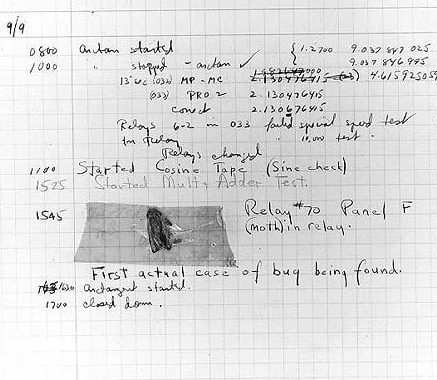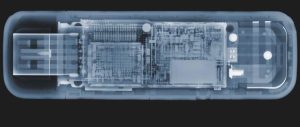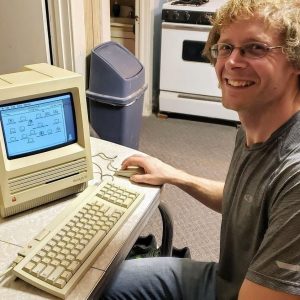Category Archives: Blog
Display Systems 19S-8 Vintage Eggcrate Display Technical Overview
For those of you that REALLY want to know the inner details behind my Vintage Light Display project, I made a technical overview video. You might be sorry you asked.
Display Systems 19S-8 Vintage Eggcrate Display Clock
There was a reason that CBS and other television networks used these type of displays on game shows when they had bright studio lights to contend with. The light is piercing from these!
Tonight, I got 22 wires soldered on 22 pins to mate with a Molex connector on the back of each display. Both digits are now directly connected up to the relay board. The software I developed can display an arbitrary 2-digit number, and then count up or down from that number until it reaches 00 or 99.
This has been a cool project! I’ll probably try to make a more detailed video in the future on the parts I selected and how all this works together.
Check out how this display worked on “Classic Concentration” hosted by Alex Trebek in the late 1980s: https://www.youtube.com/watch?v=1izUPd87wmw
Display Systems 19S-8 Vintage Eggcrate Display
Logic and software I wrote is all good! The correct plug didn’t come for the displays so I’ll have to hook the rest up later, but this is super cool!
A relic and mainstay of all classic 80s gameshows…
Initial Test of a Display Systems 19S-8 Vintage Eggcrate Display (Light Bulb Matrix), common to television game shows of the 1970s-1990s.
This is one of two Display Systems 19S-8 eggcrate displays that I purchased from Surplus Sales of Nebraska. I plan to integrate both into a working count up/count down timer powered by a ESP8266 microcontroller module and a couple of relay boards.
This eggcrate display uses a common 28 volt DC power source on one pin. Then, depending on which pin the ground is connected, will light each of one possible digit: 1, 2, 3, 4, 5, 6, 7, 8, 9, 0 and $. It’s also possible to display strange characters by connecting multiple grounds between pins.
I plan to use a single 150 watt 12 volt DC power supply to power dual boost controllers that will output the needed 28 volts. The 12 volts is still needed for the relay boards. The ESP8266 module will be connected to a 5 volt DC output from the relay board.
In both displays, I only needed to replace one lamp upon receiving them. The lamp is a common 1820 mini-bayonet style incandescent.
It’s December 7th.
It was a sobering experience for Bethany and I to be on a ship in Pearl Harbor in February of 2013, but absolutely nothing compared to what people experienced here on today’s date in 1941. 9 quarts of oil still float to the water’s surface from the USS Arizona EACH DAY as a permanent reminder of the sacrifices made here 79 years ago. Bullet holes etched in the hangar glass on Ford Island are still visible today, telltale marks of the strafing from the Japanese Zeros. Let’s not forget the sacrifices military personnel and civilians made through World War II to lead our country and our allies to victory, allowing us all to continue to live the freedom we all take for granted from time to time.
2020..a year to be thankful for
2020 was a year to be thankful for.
“Oh really?” you might ask. What was possibly so good about this horrible, pandemic year?
I believe that 2020 taught us that the simple bonds are the most important. Bonds between one and their family, between one and their friends, and between one and their spirit. Helping one another out, enjoying simple times together when able.
It was the freedom, rather, “society’s permission” to explore a little out of our comfort zones. To pivot around in our lives which many of us may have been guilty of being complacent in. Each one of us found something new about ourselves to help build us into that person we want to become.
Grace. We know that not all of us have had a smooth go at it. And given these unique times, we’ve found the strength to be more flexible with our fellow man.
On a personal note, I can say that I am thankful for a short recovery from my injury back in June. It is a weakness of mine to not ask for help when sometimes I need it, and to those that offered that help, whether through task or encouragement, I am thankful for you.
2020. This year, we have more to be thankful for than ever.
Return the shopping cart…
The First Computer Bug
Searles MX in Searles, MN from back in June of 2008
In 2008, there was a natural terrain motocross track in Searles, MN near New Ulm. It was open for a few years and was always a good time.
Google’s Role in Social Distancing
The more you know!
Believe it or not, they get lighter. USB drives use Flash memory, which means the the ones and zeros of your data are stored on transistors. When you save data, a binary zero is set by charging the float gate of the transistor, and a binary one is set by removing the charge. To charge it, we add electrons, and the mass of each electron is 0.00000000000000000000000000091 grams. This means that an empty USB drive (which mostly holds zeros) weighs more than a full USB drive (which has ones and zeros). Add data, reduce the weight. However, you would need to weigh more USB drives than exist on the planet together at once before the difference in weight became easily measurable.
Not All is Doom and Gloom with COVID
Let’s all make the world better in small ways
Wise words. If only… If just only… we could all spend time doing work making the world better in small ways. Theorizing about large changes in the world is disillusioning because people don’t think they are that powerful. But in reality, a lot of us doing small meaningful things is what can actually change the world for the better.

I received a Certificate of Special Congressional Recognition!
Wow! I received a Certificate of Special Congressional Recognition from our District’s Representative Jim Hagedorn for the “Hidden Gem” award I received from the Faribault Virtues Project. It was an honor to be recognized for some work I’ve done over the years preserving history in Faribault and Rice County. If we all pitched in and helped our community in one or two small ways, what a wonderful place our world could become!
Two Brians honored for preserving history
By ANDREW DEZIEL adeziel@faribault.com Sep 12, 2019

Two Brians from Faribault were honored on Wednesday for selflessly using their spare time to preserve a bit of Faribault’s history.

Community members heading the Faribault Virtues Project Virtues Project seeks to strengthen are hoping to identify unsung heroes in the city with the Hidden Gems initiative.
The surprise event was to honor the men as Hidden Gems, a program spearheaded by the Virtues Project-Faribault, part of an international campaign launched in 1991. The Virtues Project seeks to strengthen communities and help people to live more self-empowered lives. Among the 100 virtues which the project seeks to highlight are creativity, flexibility, and self-discipline.
A hallmark of the Hidden Gems recognition is that the recognition is intended to come as a total surprise to the honoree.
When Brian Schmidt and Brian Klier walked into the Carlander Family Room at the Rice County Historical Society, they were greeted by several dozen friends, family members and co-workers, excited to honor them for their generous donations to the community and the way they exemplify the 100 virtues.
Brian Schmidt
Brian Schmidt currently serves as the president of the Rice County Historical Society. When he’s not working at Malt O’Meal/Post Consumer Brands, the Faribault native loves to share his immense passion for Rice County history with the community.
Schmidt wasn’t much for history in high school, but his interest in local history was piqued when he started to explore the then-abandoned Fleckenstein Brewery and found hundreds of old, unique bottles. Schmidt ultimately donated the bottles and other Fleckenstein artifacts to the Rice County Historical Society and soon became deeply involved as a volunteer.
Schmidt says he’s always eager to see what historical artifacts people bring to the historical society on a daily basis. Schmidt noted that even though many of the Historical Society’s collections are full of simple relics that had meaning to only a small number of people, those artifacts can still give someone a unique sense of what life in Faribault used to be like.
Schmidt is grateful that he can play a role in preserving a little bit of Rice County’s past for future generations to appreciate and gives tremendous credit to the Historical Society’s volunteers and thousands of members, who he says are like family to him.
“It’s easy for a person to be a volunteer because we have such a great group of people,” he said.
Brian Klier
Like Schmidt, Klier is a lifelong Faribault resident who has worked as a computer technician with the Faribault Public Schools for the last 24 years. Also like Schmidt, Klier said he was never much for history class in high school.
Klier’s interest in local history was piqued in part by a more modern piece of history. While at work, Klier learned that photos of Faribault by the Faribault Junior High School’s video and photography club from the 1970s and 1980s were about to be disposed of.
Klier saved the slides and donated them to the Rice County Historical Society, but not before scanning them and uploading them online. He’s posted many of them in the Facebook group he moderates, “You know you grew up in Faribault when…”
An original user of the group, although not the creator, Klier offered to moderate it after he noticed the quality of the group begin to deteriorate, with few active users and an increased number of spam posts.
With Klier as an active moderator and contributing his own unique content, the group has become one of the most popular Faribault-related Facebook groups. Somehow, Klier also finds time to operate the Rice County Skywarn page on Facebook.
Klier encouraged community members to find what they are passionate about, and consider spending what free time they have supporting related groups.
“If each of us shared one or two things that we are passionate about with the community, I think Faribault would be a much better place,” he said.
Reach Reporter Andrew Deziel at 507-333-3129 or follow him on Twitter @FDNandrew.
Tri County ATV Park RAW from April of 2005
A look at a typical Spring afternoon in Tri-County ATV Park near Faribault/Northfield, Minnesota in April 2005.















